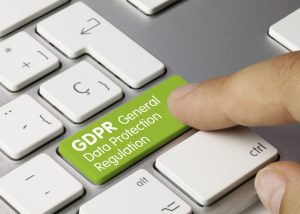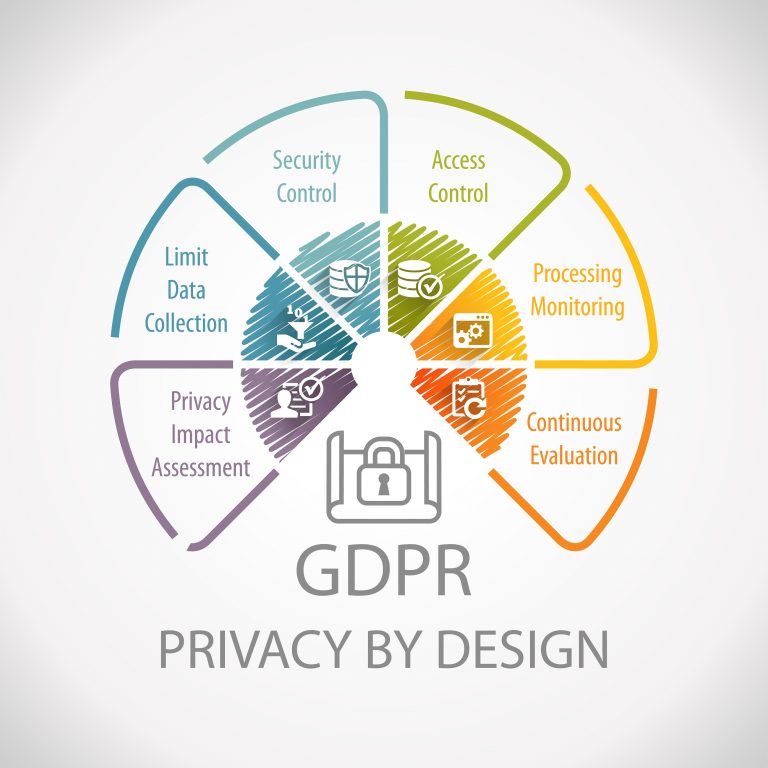Originally published on PM360.
Pharmacogenomics: A Brief Introduction
Pharmacogenomics is the study of the role of the genome in drug responses. That is, it identifies genetic loci associated with known drug responses on a population-level. Some of the current pharmacogenomic approaches used include multigene analysis and whole-genome single nucleotide polymorphism profiles. Subsequently, the genetic variants affecting an individual’s drug response can be assessed based on this information.
Pharmacogenomics take into account both the pharmacokinetics and pharmacodynamics of a drug. Based on pharmacogenomic evidence, we now know that many differences in drug efficacy and toxicity are due to genetic polymorphisms. Understanding the effects of genetic variations can thus help improve drug efficacy. Moreover, it can help minimize adverse events through the development of personalized medicine.
Pharmacogenomics vs. Pharmacogenetics
While similar in many ways, pharmacogenomics and pharmacogenetics are two distinct concepts. Specifically, they differ in their level of application. In brief, pharmacogenetics relates to the effects of individual genetic variations on drug efficacy and toxicity. Meanwhile, pharmacogenomics refers to the study of how genetic factors relate to such individual variabilities. That is, pharmacogenomics refers to the broad application of genomic technologies for the development or categorization of a drug. Pharmacogenomics systematically looks for genomic variations that may explain certain observed drug responses within a population. Conversely, pharmacogenetics assesses the genetic cause after an individual develops an unexpected drug response.
Benefits of Pharmacogenomics
 Currently, most drugs are “one-size-fits-all.” However, not everyone will react equally to the same drug. Some patients may receive a huge benefit, while others will see no difference at all. Some might experience minimal side effects, whereas others cannot tolerate the drug due to high toxicity. Today, these situations are generally overcome by gradually changing the dose, intensity, or drug itself. That is, using a “trial and error” approach. For obvious reasons, this is less than ideal. In the near future, pharmacogenomics may be routinely used to choose the drug and dose with the highest likelihood of success. This would allow physicians to avoid prescribing various drugs until they find the right one. In turn, this would save both time and money.
Currently, most drugs are “one-size-fits-all.” However, not everyone will react equally to the same drug. Some patients may receive a huge benefit, while others will see no difference at all. Some might experience minimal side effects, whereas others cannot tolerate the drug due to high toxicity. Today, these situations are generally overcome by gradually changing the dose, intensity, or drug itself. That is, using a “trial and error” approach. For obvious reasons, this is less than ideal. In the near future, pharmacogenomics may be routinely used to choose the drug and dose with the highest likelihood of success. This would allow physicians to avoid prescribing various drugs until they find the right one. In turn, this would save both time and money.
Although rapidly growing, it should be noted that pharmacogenomics is a relatively new field. Hence, its use remains somewhat limited. Physicians are starting to use pharmacogenomic information to prescribe certain drugs. However, routine testing exists only for limited conditions. An important example is trastuzumab, which is only effective for HER2-positive breast cancer patients. Moreover, abacavir, an antiviral drug prescribed to patients with HIV, may cause severe adverse drug reactions (ADRs) in patients with certain polymorphisms. Accordingly, genetic testing is now routinely performed before prescribing these drugs. Nevertheless, pharmacogenomics will very likely play a role in numerous other common conditions in the future.
All this said, an individual’s drug response is multifactorial. That is, there are multiple gene-environmental interactions to consider. For this reason, completely personalized medicine is not yet feasible (although we’re slowly getting there!)
Role of Pharmacogenomics in Developing New Drugs
In addition to determining the appropriate candidates for existing drugs, pharmacogenomics is also useful for developing new drugs. It can help design highly efficient and safe drugs for patient subgroups with various genetic profiles. If early-phase clinical trial data suggest toxicity or poor efficiency due to certain polymorphisms, later-phase trials can be designed with this in mind. This would allow the demonstration of therapeutic benefits without exposing non-receptive subjects to a treatment. Alternatively, by performing pre-enrollment genetic screening, you can ensure a more time- and cost-effective trial. Moreover, pharmacogenomics can identify the specific molecular pathways to target. Finally, it can give new life to previously abandoned drugs. If testing shows that an abandoned drug is efficient in certain subgroups, it may be reintroduced for new indications.
Role of Pharmacogenomics in Improving Drug Safety
Importantly, ADRs are a major cause of poor drug adherence, hospitalization, and even mortality. In the United States alone, ADRs cause an estimated 100,000 deaths annually. This represents the fourth leading cause of death. Accordingly, identifying individuals at high risk of idiosyncratic ADRs could help reduce these events and associated costs. Individual differences in genes coding for proteins metabolizing or transporting drugs, and their receptors, may affect drug efficacy and toxicity. Thus, the potential of pharmacogenomics to help minimize ADRs is vast and is being continuously studied.
Pharmacovigilance – An Essential Means of Detecting and Preventing Adverse Drug Reactions
At the time of market approval, the long-term safety of a drug often remains unclear. Further, the samples studied in clinical trials are rarely fully representative of the real-world patient population. Especially, patients frequently have more comorbidities and take several different drugs in real-life clinical practice. Pharmacovigilance can be defined as the practice of continuously monitoring the effects of a drug post-approval. The main goals are to detect, assess, understand, and prevent any short- and long-term ADRs. Moreover, it is also crucial for ensuring a good risk-benefit ratio. Accordingly, pharmacovigilance is vital for quality management of all aspects of healthcare delivery.
Currently, the pharmacovigilance system depends largely on spontaneous reporting of adverse events. However, this system faces numerous challenges.
Barriers to the Current Pharmacovigilance System
Pharmacovigilance is highly time-consuming, and a standardized approach for reporting to health authorities is lacking. To optimize pharmacovigilance, this process needs to be streamlined. Moreover, the effectiveness of a pharmacovigilance system depends on cooperation among healthcare professionals.
Importantly, although the number of adverse events reported annually is increasing, this has not resulted in faster detection or improved public health. In fact, under-reporting remains one of the biggest challenges of pharmacovigilance. An estimated 95% of ADRs go unreported. There are multiple reasons for this high proportion. These include poor knowledge regarding the types of reactions to report, particularly when idiosyncratic. Furthermore, limited awareness of the national reporting scheme and difficulties in assessing the causality and mechanisms of adverse events are important barriers. Although some of these barriers can be overcome by considering pharmacogenomic data, the pharmacogenomic era also brings novel challenges.
Relationship Between Pharmacovigilance and Pharmacogenomics – What is “Pharmacogenovigilance”?
“Pharmacogenovigilance” is roughly defined as pharmacovigilance activities informed by pharmacogenomics analyses and tests. It encompasses the study and knowledge of genetic variations throughout all parts of healthcare delivery and patient care. Both pharmacovigilance and pharmacogenomics aim to explain individual and inter-population heterogeneity in drug pharmacokinetics and pharmacodynamics. While pharmacovigilance improves patient care and safety, pharmacogenomics plays an important role in optimizing drug safety.
By incorporating pharmacogenomics, pharmacogenovigilance is more mechanistic in its surveillance approach than traditional pharmacovigilance. This is especially useful for establishing causality. Further, it allows extrapolation from one population to another if the worldwide polymorphism distribution linked to a certain drug response is known. It also helps understand the pharmacokinetic and pharmacodynamic performances of drugs in various genetic subpopulations.
Accordingly, in the current pharmacogenomics era, pharmacovigilance cannot ignore this concept. In the future, it might even be unethical not to consider pharmacogenomic tests as part of pharmacovigilance efforts. Thus, a national pharmacovigilance system considering pharmacogenomics must be established. This will help integrate different data sources for assessing the causal relationships between genetic markers, drugs, and ADRs.
Nevertheless, pharmacogenovigilance is not yet routinely employed in clinical practice. Part of the reason is that pharmacogenomics is still a new field. Despite recent advances, its integration into healthcare services has been slow. Another major barrier is the limited awareness among healthcare providers.
Pharmacogenovigilance in the Digital Age
Additional barriers to the routine use of pharmacogenovigilance stem from ethical and legal issues related to privacy and data protection. The delivery of healthcare increasingly involves technology. Technological and digital advances have allowed researchers and developers unprecedented access to vast amounts of patient data. Currently, most pharmaceutical companies report using digital technologies to collect, store, and share data. In the future, genetic data may be shared openly among investigators to conduct collaborative clinical trials, develop better targeted therapies, and more easily incorporate technological advances. As a result, safer and more efficient drugs can be developed. However, with the increased use of digital tools for sharing data between stakeholders, the risk of cybercrime is increasing. Consequently, digital security becomes crucial.
Digital security is essential for all parts of the drug development process. This includes not only during clinical trials but also for pharmacogenovigilance. As pharmacogenomics is being increasingly utilized, all efforts to protect patient data related to genetic information must be taken.
The EU General Data Protection Regulation (GDPR)
As of May 25, 2018, companies collecting data on EU citizens will need to comply with strict new rules surrounding the protection of personal data and privacy. This includes both data transactions within EU member states and exportation of personal data outside the EU. Breaches will result in steep fines of up to 4% of a company’s total global revenue. As a result, it could have a big effect on how companies throughout the world handle data privacy.
The main reason for this new regulation is public concerns over privacy. The GDPR replaces a 1995-initiative, published long before the present digital era. Thus, it did not address the current ways data are collected, stored, and shared. The privacy data protected by the GDPR include basic, demographic, health, and genetic data, among many other types. Surveys have indicated that customers are likely to boycott companies that have experienced data breaches. Conversely, they are more likely to support companies that take data protection seriously. This fact should be considered when North American companies contemplate whether to use or block data on EU citizens, and whether to comply with the GDPR. However, for large, multinational pharmaceutical companies, this is not a choice. Instead, they need to focus on how to best ensure compliance.
Effects of the GDPR on North American Companies
Whereas the EU has always taken a “consumer-first” stance, US regulations tend to favor businesses over the consumer. Prior to its launch, the majority of US companies considered that the GDPR will require them to rethink their strategies in Europe. Some speculated that the GDPR may bring a competitive disadvantage compared to European companies. Others, however, considered that this move will result in improved customer confidence and, consequently, improved business.
As a consumer, you probably noticed a flood of emails from various companies about “security updates” in late May. In the days leading up to May 25, “GDPR” was trending on both Facebook and Twitter. Many US-based companies that have opted in to the GDPR have offered users outside the EU the same rights over their data. Although non-EU citizens cannot file complaints against a company for violating the GDPR, this suggests that the GDPR is changing the way companies approach personal data.
However, while this is all encouraging, it is far too early to tell if the GDPR will be strictly reinforced and have any palpable effect on US or Canadian companies. Nonetheless, any pharmaceutical or healthcare company using data of EU citizens or with offices in Europe must make themselves aware of, and comply with, the rules of the GDPR. This is a huge task; one that companies have had two years to prepare themselves for.
Ensuring GDPR-compliance for North American Companies
To be GDPR-compliant, there are several strict conditions to meet. Individuals must be provided with means to control, check, and delete any personal information stored by companies. For example, informed consent is now required to store, process, and access personal data. On request from the individual, companies must erase these data. Further, in the US, there are often multiple copies of patient data, stored in various locations. Under the GDPR, the number of copies must be kept to a minimum. Only the specific data needed for a particular purpose should be shared.
As another important change, data breaches must be reported to supervisory authorities and the affected individuals within 72 hours of detection. Hence, the GDPR will force many North American pharmaceutical and healthcare companies to drastically reconsider the way they handle personal data. However, there are exceptions to these rules. For example, the GDPR does not supersede legal requirements (e.g., HIPAA health record requirements) stating that an organization maintain certain data.
If your company is not yet fully GDPR-compliant, there are several things you can do. Importantly, all relevant stakeholders should be involved in the process, not just IT. Creating a task force including representatives from all organizational teams with access to patient data might be helpful. These may include research, marketing, and sales, among others. This will not only help with implementing the necessary changes, but also to educate and prepare your staff to better deal with the impact of the GDPR on their teams. Hiring, or consulting with, a data protection officer is highly beneficial. Moreover, it is also recommended to conduct regular risk assessments/audits and update the current data protection plans. Finally, make sure that any third-party providers you work with are GDPR-compliant as well. Otherwise, any breaches made by these providers will be your responsibility.
Additional Benefits of Ensuring GDPR-compliance
 This process may seem overwhelming and like a lot of hard work at first. However, complying with the GDPR also provides a competitive advantage, boosting consumer confidence. Additionally, the improvements necessary to meet the requirements will likely improve the overall efficiency of how data are managed. Accordingly, the GDPR may have a widespread effect and encourage similar measures worldwide. Whether applicable to your company or not, all means to protect the personal and genetic information of patients should be taken, irrespective of their citizenship. As a result, by understanding and following these regulations, patient data will be stored and shared more safely.
This process may seem overwhelming and like a lot of hard work at first. However, complying with the GDPR also provides a competitive advantage, boosting consumer confidence. Additionally, the improvements necessary to meet the requirements will likely improve the overall efficiency of how data are managed. Accordingly, the GDPR may have a widespread effect and encourage similar measures worldwide. Whether applicable to your company or not, all means to protect the personal and genetic information of patients should be taken, irrespective of their citizenship. As a result, by understanding and following these regulations, patient data will be stored and shared more safely.
How Virtual Advisory Boards Can Help
To navigate the GDPR compliance process, insights from the relevant experts are invaluable. Having an expert advisory board can help with establishing, validating, and/or monitoring compliance standardizations for pharmaceutical companies. Fortunately, Impetus Digital can assist with establishing an advisory board platform, leveraging the expertise of various stakeholders to give timely and expert advice on how best to navigate these complex regulations.
How Does it Work?
Stakeholders can include researchers, healthcare providers, administrators, payers, and other experts. The enrolled advisors are engaged through a series of online touchpoints. These can either be in the form of web meetings or online asynchronous assignments delivered as survey questions via InSite Surveyor™, discussion questions via InSite Exchange™, or annotation exercises. Through these series of advisor online touchpoints, manufacturers can solicit feedback on their strategies and progress. In addition to data protection standards, insights on multiple topics can be gathered. These may include marketing of genetic screening tools or how to best incorporate pharmacogenomics into clinical trials. In addition, manufacturers can leverage virtual working groups to help develop clinical papers leveraging real-world data, medical education materials, press releases, and patient advocacy programs.
The virtual nature of the boards and working groups can help increase the engagement rates of advisors. Moreover, the assignments can give the advisors or steering committee members time to pause, reflect, process, and review their colleagues’ comments on their own time. In turn, this allows for more thoughtful and granular insights shared through the online forums. Impetus and their technical team create, program, project-manage, and report all assignments. Hence, the manufacturer’s workload is minimal and so are the costs when compared to more traditional in-person consultancy meetings. Leveraging a virtual advisory board to effectively plan and implement a successful project is a time- and cost-effective solution. Furthermore, it has the added benefit of building strong customer advocacy in the process.
Take-home Message
The integration of pharmacogenomics into pharmacovigilance systems will require the cooperation of multiple stakeholders. Standardized practice guidelines relating to pharmacogenomics research are needed. To ensure safe data handling, enhanced cyber security, and compliance with the GDPR, national and company policy frameworks need to be designed and implemented. Finally, ongoing and enhanced education and communication between different disciplines are required. Once these objectives are met, pharmacogenomics may completely transform the field of pharmacovigilance. In turn, there is huge potential of pharmacogenovigilance to enable personalized medicine and reduce ADRs. In the near future, these efforts could improve both drug safety and efficacy, changing the way we approach the treatment of many common diseases.
References
Adams, J. (2008). Pharmacogenomics and personalized medicine. Nature Education, 1, 194.
Farahani, P., Levine, M. (2006). Pharmacovigilance in a genomic era. The Pharmacogenomics Journal, 6, 158-161.
Frontline Medical News. (2018). Could European data privacy rules cost you big? Retrieved from https://www.pm360online.com/could-european-data-privacy-rules-cost-you-big/
Gill, D. (2017). Pharmacovigilance, pharmacogenomics and security in the cyber age. Retrieved from https://pharmaphorum.com/deep-dive-future-pharma-july-2017/index.htm#!/pharmacovigilance-pharmacogenomics-and-security-in-the-cyber-age
Jaffe, J., Hautala, L. (2018). What the GDPR means for Facebook, the EU and you. Retrieved from https://www.cnet.com/how-to/what-gdpr-means-for-facebook-google-the-eu-us-and-you/
Nadaue, M. (2018). General Data Protection Regulation (GDPR) requirements, deadlines and facts. Retrieved from https://www.csoonline.com/article/3202771/data-protection/general-data-protection-regulation-gdpr-requirements-deadlines-and-facts.html
National Human Genome Research Institute. (2016). Frequently Asked Questions About Pharmacogenomics. Retrieved from https://www.genome.gov/27530645/faq-about-pharmacogenomics/
Patil, J. (2015). Pharmacogenetics and Pharmacogenomics: A Brief Introduction. Journal of Pharmacovigilance, 3, e139.
Şardaş, S. (2010). Pharmacogenovigilance – An Idea whose Time has Come. Current Pharmacogenomics and Personalized Medicine, 8, 1-3.
Şardaş, S., Endrenyi, L., Gürsoy, U.K., Hutz, M., Lin, B., Patrinos, G.P., Steuten, L.M.G., Wang, W., Warnich, L., Özdemir, V. (2014). A Call for Pharmacogenovigilance and Rapid Falsification in the Age of Big Data: Why not First Road Test Your Biomarker? OMICS, 18, 663-665.
Third Door Media, Inc. (2018). MarTech Today’s Guide to GDPR — The General Data Protection Regulation. Retrieved from https://martechtoday.com/guide/gdpr-the-general-data-protection-regulation
U.S. Department of Health & Human Services. (2018). What is pharmacogenomics? Retrieved from https://ghr.nlm.nih.gov/primer/genomicresearch/pharmacogenomics
Yau, A., Simbak, N.B., Haque, M. (2014). Pharmacogenovigilance: A Potential Tool in Pharmacovigilance. Research Journal of Pharmacology and Technology, 7, 1476-1482.



